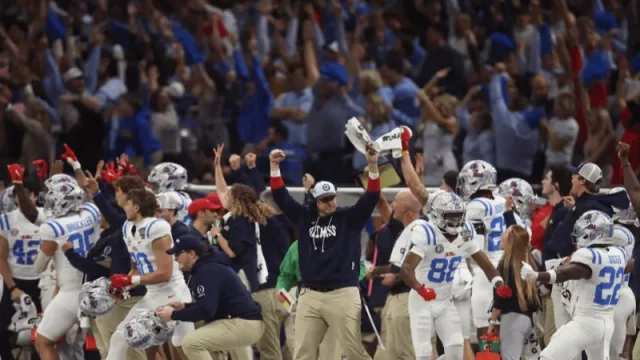Who determines the most livable cities in the world?
The Economist has released its highly anticipated annual ranking, the 'Global Liveability Index,' revealing the cities that offer the best living conditions. In this article, we will explore the results of this study and delve into three key points: the most livable cities in the world, why Canadian cities lead in the Americas, and finally, the situation of Latin American cities and the reasons behind their placement on the list.
The Best Cities to Live In: Highest Quality of Life
The 2023 ranking has shown significant improvements in the 'Global Liveability Index,' with an increase in the average score from 73.2 out of 100 in 2022 to 76.2 this year. These advancements are partly attributed to the decline of the coronavirus pandemic and improvements in the healthcare and education sectors in multiple cities across Asia, the Middle East, and Africa. However, the stability category has seen a decline due to the growing perception of corruption and social unrest in some cities, as well as an increase in crime in different regions.
Vienna, at the Top
The city of Vienna, with an impressive score of 98.4 out of 100, maintains its top position in the ranking as the most livable city in the world for several consecutive years. According to the report, Vienna stands out for its wide range of cultural and entertainment offerings, stability, quality infrastructure, and healthcare. Following closely are Copenhagen, the Danish capital, and Melbourne, an Australian city that also provides a conducive environment for a fulfilling life.
Here is the ranking of the most livable cities in 2023:
-
Vienna (Austria)
-
Copenhagen (Denmark)
-
Melbourne (Australia)
-
Sydney (Australia)
-
Vancouver (Canada)
-
Zurich (Switzerland)
-
Calgary (Canada)
-
Geneva (Switzerland)
-
Toronto (Canada)
-
Osaka (Japan)
-
Auckland (New Zealand)
Canada: Home to the Best Cities in the Americas
Regarding the Americas, Canada leads the list with three cities in the top 10: Vancouver, Calgary, and Toronto. Australia and Switzerland also achieve good results, with two cities each. What makes Canadian cities stand out on the continent?
Which Are the Worst Cities to Live In?
On the other hand, the least livable cities in the world include Damascus (Syria), Tripoli (Libya), and Algiers (Algeria). Kiev, the capital of Ukraine, also appears on this list after being excluded in 2022 due to the Russian invasion.
Buenos Aires Continues to Reign in Latin America
Buenos Aires, with an outstanding score of 82.8, has been chosen as the best city in Latin America to live in for the second consecutive year, surpassing even Abu Dhabi, Shanghai, and other global metropolises.
Why Do Canadian Cities Top the List in the Americas?
When analyzing the Americas, it is evident that Canada stands out for its excellence in quality, securing its place in the top 10 of the most livable cities in the world. What is the secret to their success?
First and foremost, Canada excels in prioritizing the quality of life of its citizens. These cities offer a combination of political stability, security, well-developed infrastructure, and quality healthcare. Local and national governments have invested significantly in the well-being of their residents, which is reflected in positive indicators in areas such as safety, health, and education.
Additionally, Canada's commitment to diversity and inclusion is another key factor in its success. These cities pride themselves on being welcoming and tolerant environments where people from different cultural and ethnic backgrounds can thrive and feel part of the community. This diversity also contributes to a rich cultural offering and a wide range of culinary options, adding value to the experience of living in these cities.
Another important aspect is environmental care. Canada is known for its commitment to sustainability and nature preservation. These cities offer green spaces, well-maintained parks, and excellent air quality, contributing to a better quality of life and overall well-being.
Canadian cities top the list in the Americas due to their focus on quality of life, commitment to diversity and inclusion, and environmental care. These combined factors make these cities highly desirable places to live and settle.
The Reality of Cities in Latin America: Challenges and Opportunities
In contrast to Canadian cities, Latin American urban areas face specific challenges that impact their positioning in the livability ranking. While cities like Buenos Aires, Santiago, and Montevideo are considered among the best in the region, they still fall far from the top ten positions worldwide.
One of the main challenges Latin American cities face is social and economic inequality. While these cities may offer great cultural wealth, tourist attractions, and vibrant urban life, the gap between socioeconomic sectors creates significant disparities in terms of quality of life. Lack of access to basic services, insecurity, and limited development opportunities can affect the habitability and perception of these cities.
Moreover, poor infrastructure and urban congestion are obstacles that limit the quality of life in many Latin American cities. Lack of investment in efficient public transportation, traffic congestion, and limited access to basic services can lead to high levels of stress and negatively impact the living experience in these cities.
It is important to mention that, despite these challenges, many Latin American cities are working to improve their conditions and address these issues. Governments and local communities are implementing various strategies to tackle these challenges and improve the quality of life in their cities. Sustainable urban development projects are being carried out to enhance infrastructure, promote efficient public transportation, and ensure universal accessibility.
Efforts are also being made to address inequality and promote social inclusion. Policies aimed at reducing the socioeconomic gap, improving access to basic services such as education and healthcare, and promoting development opportunities for all citizens are being implemented.
Additionally, security systems are being strengthened, and measures are being taken to combat crime and ensure the residents' tranquility. These efforts are crucial to improving the perception of safety in cities and promoting an environment conducive to everyday life.
Despite these advancements, it is important to acknowledge that there is still much work to be done. Latin American cities face complex and multidimensional challenges that require a comprehensive and collaborative approach. The commitment of governments, civil society, the private sector, and experts in various fields is necessary to address these challenges and create more livable and prosperous cities in Latin America.
The Worst Cities in Latin America
In addition to analyzing the most livable cities, it is also important to be aware of the worst cities in Latin America in terms of livability. According to The Economist's index, some of the cities with the lowest scores include:
-
Caracas, Venezuela: The Venezuelan capital faces serious problems of insecurity, violence, and economic crisis, significantly impacting the quality of life of its inhabitants.
-
San Pedro Sula, Honduras: This city has been considered one of the most dangerous in the world due to high levels of violence and crime.
-
Port-au-Prince, Haiti: The Haitian capital has faced significant challenges in terms of infrastructure, access to basic services, and political stability.
-
4. Tegucigalpa, Honduras: Similar to San Pedro Sula, Tegucigalpa has also experienced high levels of violence and security issues.
- These cities face a range of challenges that have a negative impact on the quality of life of their residents. Lack of security, political instability, inadequate infrastructure, and economic problems are some of the factors contributing to their low position in the liveability ranking.
-
However, it is worth noting that efforts are being made in these cities and across Latin America to address these challenges. Initiatives are underway to improve security, enhance infrastructure, and promote economic development. Governments, communities, and international organizations are working together to create safer, more prosperous, and more livable cities in the region.
-
While there is still progress to be made, recognizing the challenges and opportunities in Latin American cities is essential for driving positive change and creating a better future for the residents.












Tu opinión enriquece este artículo: